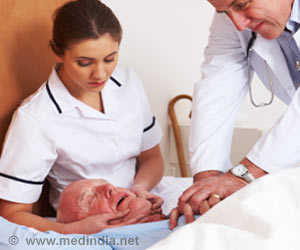The app signals potential co-rescuers when an out-of-hospital cardiac arrest has occurred and where. Co-rescuers then deliver the needed AEDs to the scene.

‘A smartphone app can be helpful for increasing survival of people experiencing cardiac arrest. With the help of the app it would now be possible to call someone with an Automated External Defibrillator to the scene.’





The Japanese researchers tested whether the app can shorten the process of finding and delivering AEDs by studying participants who were assigned to either an AED-SOS group or a group without the app. Both groups participated in scenarios involving mock out-of-hospital cardiac arrests.
Investigators found that among the 52 people they analyzed, the time from recognition of the out-of-hospital cardiac arrest to AED delivery was an average 133.6 seconds in the AED-SOS group, versus 202.2 seconds in the group without the app. Researchers said, "Shortening the time bystanders recognize out-of-hospital cardiac arrest to when they deliver shocks with AEDs could increase survival."
This research was presented at the American Heart Association's Scientific Sessions 2015.
Source-ANI














